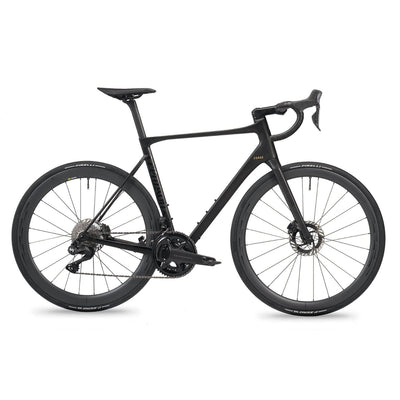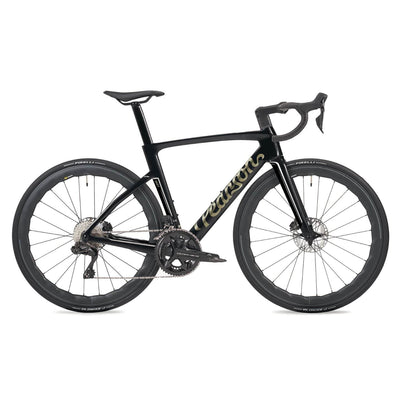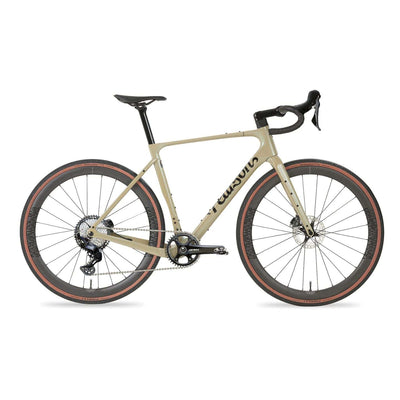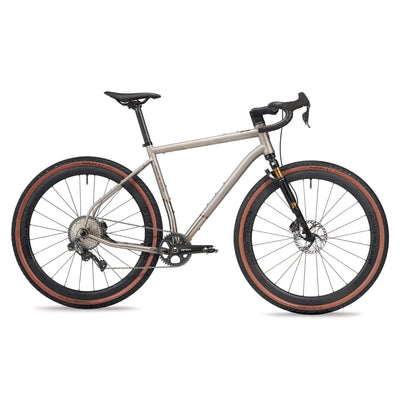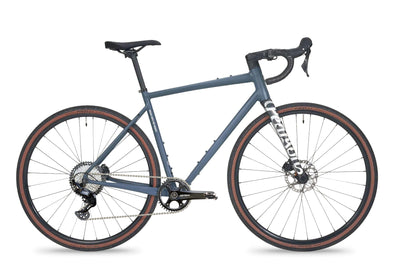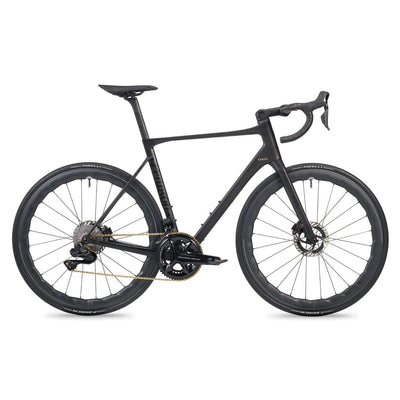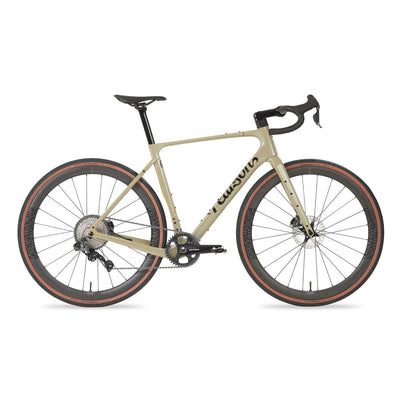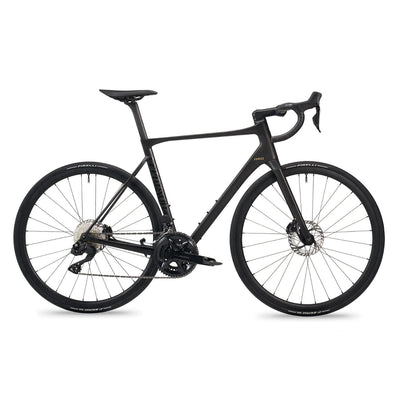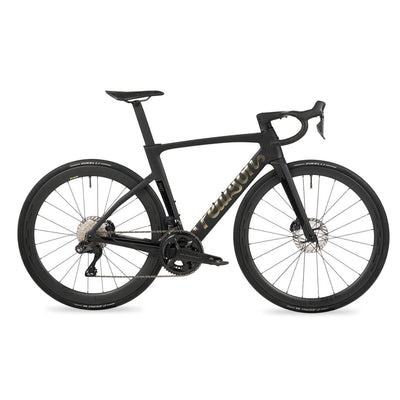PRESS THE STOPPERS: Rim brakes VERSUS disc brakes.
Disc brakes have taken over on bikes in a big way in the last few years. There are good reasons for this, but rim brakes still offer some key advantages that disc brakes aren’t going to overtake any time soon. Here’s a look at where each braking tech shines.
It’s rare these days to find a new bike that’s not equipped with disc brakes and you have to hunt around for a bike frame that is designed for rim braking. It’s increasingly the realm of smaller bike brands.
The big manufacturers still offer a reasonable selection of rim brake groupsets though. Shimano has retained the option of rim brakes with its 12-speed Dura-Ace and Ultegra groupsets, but 12-speed Shimano 105 is only available with disc brakes. You can buy SRAM 12-speed groupsets with rim brakes at Red and Force level, but not Rival eTap AXS. Campagnolo retains a rim brake as well as a disc brake option for all its groupsets. The move of 105 and Rival to disc brake only shows the way things are heading though.
Why the switch to disc brakes?
It’s worth noting that in the dry rim brakes can be almost as effective as disc brakes. Under hard braking, what normally gives out first is the traction between the tyre and the road surface. Even with rim brakes, it’s comparatively easy to induce a skid if you drop the anchors too hard.
Although all World Tour pro bikes have now morphed to disc brakes, Simon Yates once pointed out to me that in dry conditions rim brakes provide perfectly adequate stopping power for racing down mountains. My principal road bike is still rim braked and fine for summer rides.

Wet conditions are a different matter though and that’s where disc brakes shine, with much less of a lag before they start to operate than rim brakes, which need to cut through a layer of water before they’ll bite on the rim.
Modulation is also better with disc brakes, meaning that you can fine-tune your braking better for the road conditions. Unlike the cables on rim brakes, there’s no stretch in the line between the brake lever and the calliper, leading to more precise operation.
Better for integration
Disc brakes also work much better with the integrated cockpits that are now a feature of most higher spec road bikes.
There are good reasons why bikes have switched to integrated cabling, although it can be harder to work on. Exposed cables generate a disproportionate amount of drag due to their round shape. Pinarello reckoned that the change from external cabling in the Dogma F10 to internal cables in the Dogma F12 contributed a five per cent reduction in wind resistance. Hidden cable and hose runs look neater too and the increased use of wireless or wired electronic groupsets does make integrated cockpits easier to manage and service.

As we pointed out in our earlier piece on disc brakes, these work better for integrated front ends. However tight the bends necessary to route the brake hoses from the levers through the bars and stem into the frame, there’ll be no loss of braking efficiency as there’s no extra friction in the brake fluid.
In contrast, hidden rim brake cabling through an integrated front end can generate significant friction and be difficult to keep working at its best.
Rim brakes still have a weight advantage
Rim brakes still have their place though. One of them is hill climb bikes, where the low weight of rim brakes makes for the featheriest builds.
But change is coming even to hill climbs; take a look at Rebecca Richardson’s S-Works Aethos, on which she bagged seventh place in the women’s National Hill Climb Championship. The Aethos is only available with disc brakes and Richardson’s still only weighed 5kg.

Rim brakes still offer a weight advantage though. Cane Creek’s EE rim brakes, for example, start at just 156.6g a pair for direct mount callipers and they will now handle rim widths up to 28mm, making them compatible with many aero wheelsets. That’s not much more than the weight of the pair of extra-light Ashima rotors that featured on Richardson’s bike, and that’s before you take account of the brake callipers.
Disc brake bikes are getting lighter though
But disc brakes have led to developments in frame design that have shaved weight.
Almost all disc brake bikes now run on thru-axles, whereas rim brake bikes still use quick releases. A great invention in 1927 by Tullio Campagnolo, the rapid wheel changes possible with a quick release come at the expense of rigidity and precision in the hub-to-dropout interconnection.

As we pointed out in our earlier piece, a lot of the weight reduction in disc brake bikes comes as a benefit of the increased rigidity of the connection between the thru-axle and the frame. That means that the rear triangle and the fork legs can be built lighter without compromising the frame’s rigidity.
Over the last five or six years since disc brakes became common, whole bike weights for disc brake bikes have dropped to the point where they’re not much greater than rim brake bikes. They’re close to or under the UCI’s still-enforced 6.8kg bike weight limit for racing and builds like Richardson’s 5kg Aethos have become achievable.
New opportunities in wheel design
We also pointed out the major advantages of disc brakes in our previous piece: the wheel rim only has to retain the tyre and heat build-up isn’t an issue.
Whereas in a rim brake wheel the rim is having to handle inward pressure from the brake pads and the heat that braking produces, in a disc brake bike the brake rotor manages these. Since the rotor is a solid piece, the pressure from each side when braking isn’t an issue, whereas in a rim brake wheel that pressure is exerted on each outside edge of the rim but not from each rim’s other side.
Heat build-up in a rim brake wheel isn’t such an issue if that rim is made of aluminium alloy, as the metal dissipates heat effectively, but it’s an important problem with rim brake carbon wheels. Modern resins help with this as they can withstand heat without melting, but older rim brake carbon wheels were prone to failure if a rider dragged their brakes on a long descent.

Wear on the brake track is also a significant issue with rim brake wheels. Ride an expensive set of rim brake wheels through the winter and you can quickly generate a concave face to the brake track and may need to replace the rim. Let the problem get too severe and you risk a rim failure.
Winter conditions are particularly problematic as rim brake pads tend to build up a grinding paste on their surface and end up with embedded grit, which can quickly wear through the rim, so keeping rim brake pads clean is important.
Designed to handle heat
Disc brake rotors get very hot too on braking, but most rotors have a floating design, where the braking surface is bolted to a carrier. This allows the rotor to expand as it heats up, with less tendency to warp, although it’s still often possible to generate brake rub when the rotor gets hot on long descents.

Features like fins on rotors and on brake pads can help with heat dissipation and the mass of the brake calliper and the rotor can also act as a heat sink. Merida still includes cooling fins on its frames to help with disc brake cooling, but most bike brands and the major groupset makers have in general dispensed with specific cooling features.
There’s the potential to boil hydraulic brake fluid or oil under braking, but in reality the temperature at which this occurs is significantly higher than normal brake operating temperatures. SRAM says that its DOT braking fluid can withstand temperatures of over 200C without boiling.
A collateral benefit of disc rotors is that the dimensions of both the wheel rim and the tyre are less constrained. This has ushered in the era of much wider tyres on road bikes, put an end to cantilever brakes on cyclocross bikes and led to ever-wider tyres on gravel bikes.
It’s also allowed the development of aero wheelsets with very wide rims to reap maximum aerodynamic benefits. Our Hoopdriver Bump and Grind disc brake wheels, for example, measure 29mm externally - something that would never fit comfortably between the arms of a rim brake calliper.

Additional width in disc brake wheels has, in general, been achieved without additional weight as the rim can be built lighter because it doesn’t have to handle the braking forces from the brake calliper. Hookless rims are becoming more prevalent, which again helps to save a little rotating mass in the wheel rim.
Aero trumps low weight
So disc brakes have become the prevalent braking tech on road bikes. If you want a featherweight build, rim brakes may still be an advantage. But alongside this switch to disc brakes is the increased realisation that for the majority of riders most of the time, aerodynamics is more important than lack of weight.

